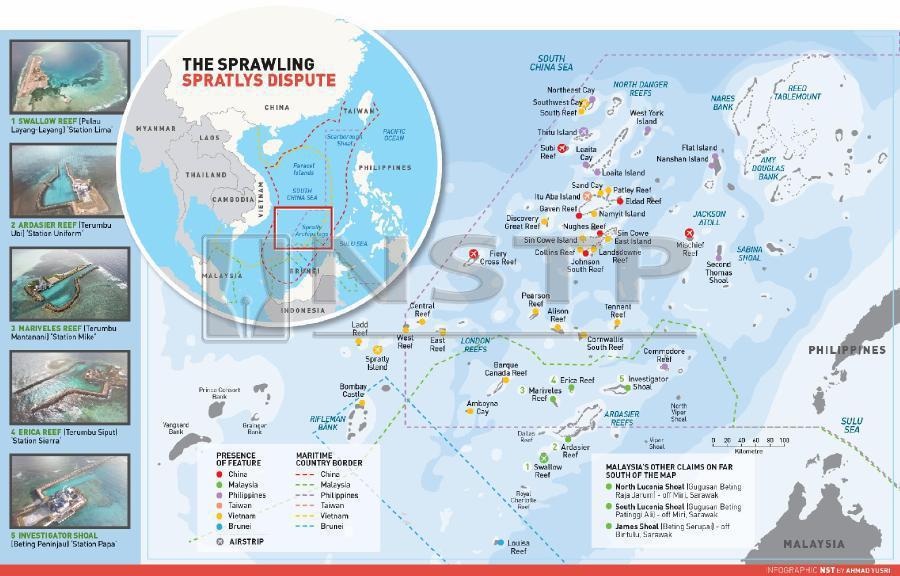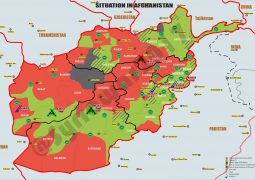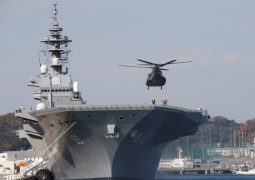China-Philippines at odds over islands: Beijing tried to block Philippine military facilities on disputed island ‘over fears US could use them’

Beijing tried to block Philippine military facilities on disputed island ‘over fears US could use them’

China’s deployment of a large fleet of vessels to the Philippines-held Thitu Island in the South China Sea is aimed at blocking the country’s construction of military facilities on the disputed island in the Spratly chain because it is concerned that the United States will be able to use such facilities, diplomatic observers said.
The two countries have been involved in a diplomatic stand-off over an increased presence of about 275 Chinese vessels near Thitu island from January to March.
The flare-up coincided with the two-week US-Philippines annual Balikatan exercise, which is taking place until Friday.
The US sent an amphibious assault ship – the USS Wasp, capable of carrying fighter jets such as the F-35B – to join the drills for the first time. They were held near the disputed Scarborough Shoal, seized by China from the Philippines in 2012.
In December, the Philippine government announced that a new beaching ramp on Thitu was under construction and that it had plans for military barracks and runway repairs.
Xu Liping, a director for Southeast Asia studies at the Chinese Academy of Social Sciences in Beijing, agreed with the suggestion that the US military could use those facilities after the repairs and upgrades.
“US warships could sail near the island and fighter jets could land or take off from the runway, directly threatening the safety of China’s island reef outposts in the Spratly Islands,” Xu said.
He said that China’s decision to send vessels near the island was a “mild warning” that the Philippines’ heavy construction of infrastructure is a challenge to Beijing’s wish to maintain the island’s status quo.

Thitu – or Pagasa, as it is called in the Philippines – is the largest of the nine features occupied by the Philippines and is home to about 100 civilians along with a small military garrison. It also claimed by Taiwan and Vietnam.
Zhang Mingliang, an associate professor specialising in South China Sea studies at Jinan University in Guangzhou, said the Philippines was “changing the status quo” of the island” by pushing new military construction.
He said Chinese vessels’ presence was “a posture of warning over the new construction” despite not actually blocking access for the Philippines to bring in construction equipment.
But Zhang said Beijing would be concerned that “Manila could share those military facilities currently under repairs and upgrades on Thitu with the US for the purpose of surveillance on China, undermining China’s military advantage in the South China Sea through the building of man-made islands”.
The Philippines has been vocal about the presence of Chinese vessels, with President Rodrigo Duterte demanding Beijing “lay off the island” and threatening to order his military to take suicide missions to defend his nation’s claim over it. China’s foreign ministry hit back, with spokesman Lu Kang saying that Spratlys were within China’s territory.
Washington-based think tank the Centre for Strategic and International Studies (CSIS) stated that the boats had the characteristics of China’s maritime militia.
The approximately 275 Chinese vessels sent to Thitu area included vessels from the navy and coastguard along with dozens of fishing boats, according to the CSIS. Richard Heydarian, a Manila-based academic and military analyst, said “a significant number of them belong to Chinese People’s Liberation Army [PLA] maritime militia forces”.
The increased presence was to “prevent the Philippines from building structures on the sandy cay, a low-tide elevation in Thitu’s territorial sea”, Heydarian said.
These deployments began in mid-December, with their number reaching a high of 95 that month before dropping in January, according to the think tank’s analysis of satellite images.
“This is not really helpful to President Duterte because he is trying very hard to sell his rapprochement to China to the Philippines people, including to the Philippines military, which remains very sceptical of China,” Heydarian said.
Relations between China and the Philippines have deteriorated, with Duterte’s predecessor Benigno Aquino taking the South China Sea disputes to an international tribunal that in 2016 ruled in favour of the Philippines. Beijing said it would ignore the ruling.
A Chinese think tank, speaking on condition of anonymity, suggested that China and the Philippines could discuss a fishing agreement for Thitu to ease tensions between the countries.
Zhu Feng, a professor specialising in US studies at Nanjing University, said one of the causes of recent tensions over Thitu was that Beijing had not yet allowed Philippine fishing boats access to Scarborough Shoal.
“The massive presence of about 275 Chinese vessels also makes Manila worry about a recurrence of the Scarborough Shoal stand-off,” Zhu said. “It shows that disputes over territorial claims and economic rights in the South China Sea still have no solution.”
But Heydarian said such an offer was unlikely to be accepted by the Philippines, with China still demanding the right to regulate fishing activities – which would be unacceptable to the Philippines because it claims Scarborough Shoal as its territory.
Shen Dingli, a Shanghai-based international relations professor, said recent defiant gestures by the Philippines indicated that it was returning to the confrontational approach that had been favoured by Aquino.
But Shen said the two sides could manage the tensions themselves through non-confrontational consultation. “No conflict between China and the Philippines leaves the US no room to [get involved],” he said.
- Previous Iran protests to France over diplomat’s nuclear comments
- Next Modi says India undermined Pakistan nuclear threat
















